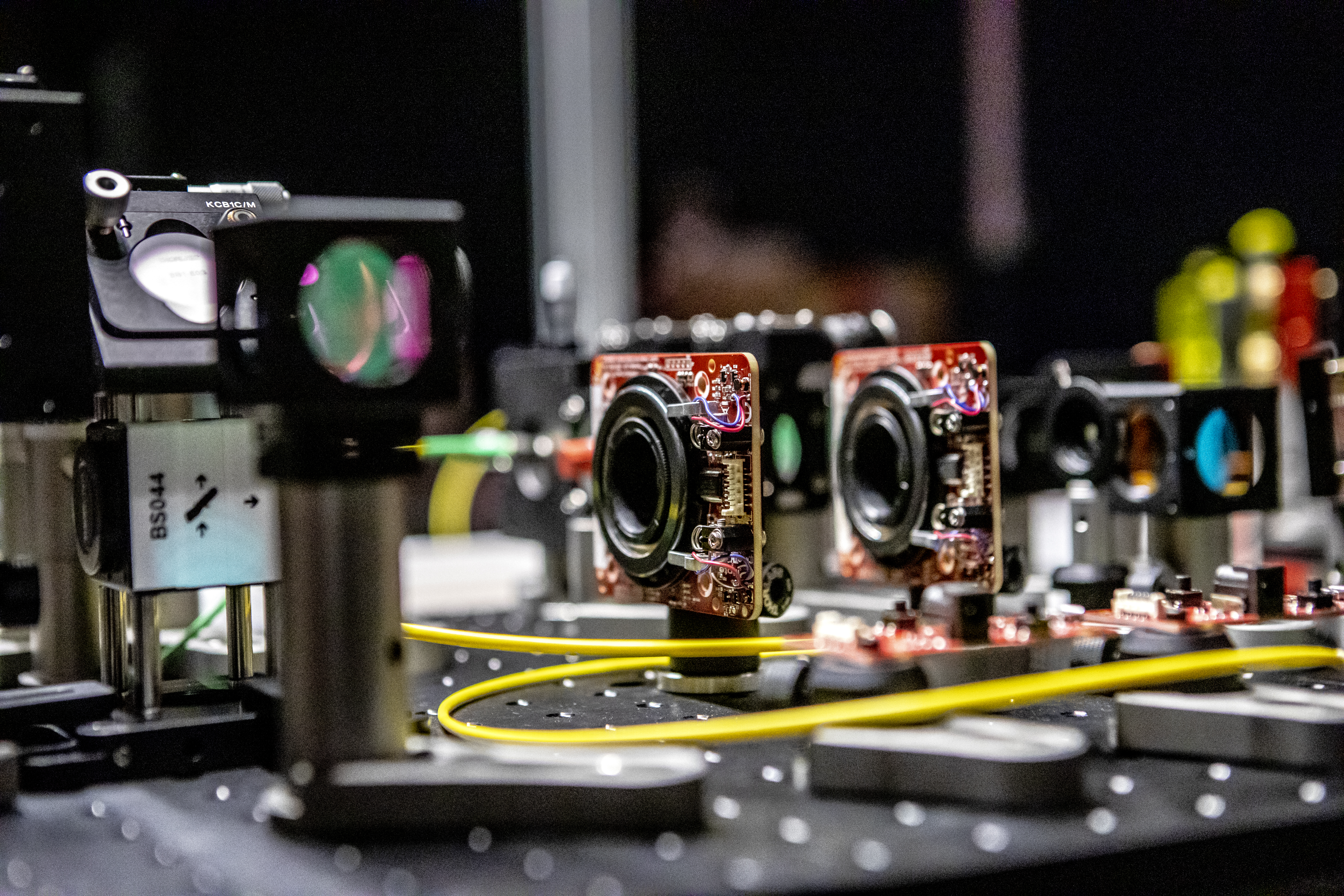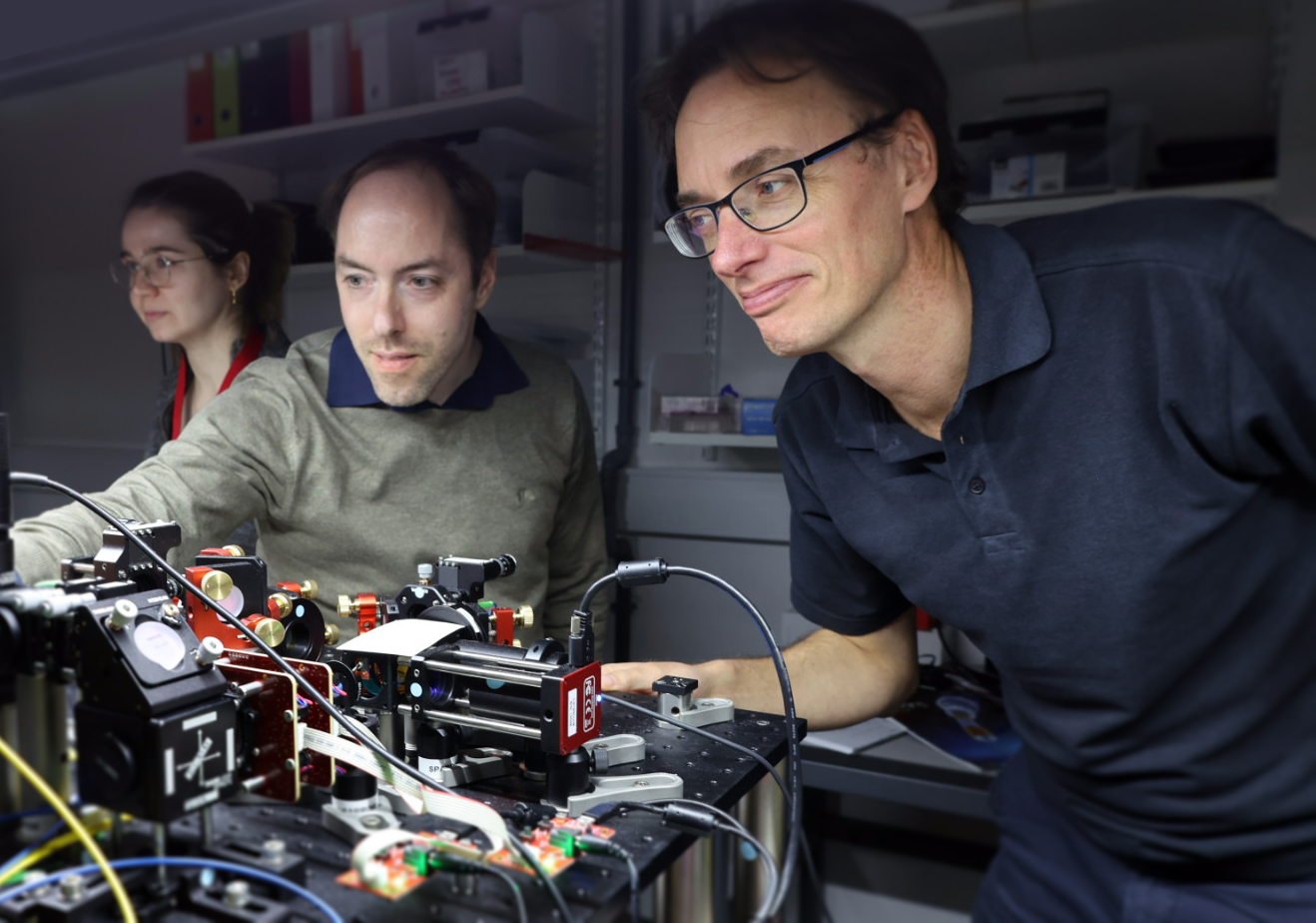Quantum physics often challenges what we know about the world, and one of its most mind-boggling ideas is entanglement. It has puzzled scientists but could lead to game-changing technologies such as quantum computers and secure communication. Researchers recently made a big leap by figuring out how to create entangled particles on demand, making quantum systems more reliable. This breakthrough could bring us closer to everyday uses of quantum technology, transforming how we compute and communicate.
Quantum physics often challenges the classical understanding of how the world works, and entanglement is one of its most intriguing phenomena. This “spooky action at a distance”, as Albert Einstein famously called it, has puzzled scientists for decades but also holds the key to revolutionary technologies such as quantum computing and quantum communication.
A team of researchers led by Peter Lodahl at the University of Copenhagen recently made a significant breakthrough in this field. Their work on deterministic entanglement, enabling entangled particles to be created on demand with high precision, could open new doors to technological advancements in quantum computing.
“Our work with deterministic single-photon sources has made us well known, and now we are taking the next step with entanglement technology. This is truly a breakthrough showing that we can create deterministic entanglement. It opens up a highly resource-efficient route to scalable photonic quantum computers and novel opportunities for quantum repeaters towards a quantum internet that exploits multi-photon entanglement as a robust means of encoding quantum information,” explains Peter Lodahl, Professor and Group Leader of the Quantum Photonics Group at the Niels Bohr Institute, University of Copenhagen; Director of the Center of Excellence for Solid-state Quantum Simulators for Biochemistry (Solid-Q), University of Copenhagen; and founder of Sparrow Quantum ApS.
The engine of quantum technology
Entanglement is at the core of all quantum technologies, especially quantum computing, which promises to perform computations far beyond the reach of classical computers. Entanglement refers to a mysterious connection between two particles – such as photons – that remain linked no matter how far apart they are. When one particle is measured, its entangled partner rapidly reflects that change, even if it is light-years away.
“To understand the concept of entanglement, envision two dice. In the classical world, the result of rolling one dice has no effect on the other. However, in the quantum world, if the dice are entangled, rolling a six on one dice would mean the other dice is automatically linked to that outcome – regardless of the distance between them.”
In quantum computers, qubits (quantum bits) can exist in multiple states simultaneously, in contrast to classical bits, which are either 0 or 1, and two qubits can be entangled. This feature enables quantum computers to process complex calculations much more rapidly than traditional computers.
“Creating and controlling entangled particles has always been one of the greatest challenges in quantum research. Entanglement was traditionally created in a probabilistic manner, meaning that the entanglement was not guaranteed every time, wasting both energy and resources.”
This is where the work of Peter Lodahl and his team stands out. They have developed a method to create deterministic entanglement, ensuring that entangled particles are produced every time, efficiently and precisely.
“The deterministic entanglement we have now achieved breaks the possible boundaries for correlations in classical systems,” Peter Lodahl says. “This is a huge step forward in being able to build quantum computers. We have been working on this for many years, and now we can deliver technology that can make a big difference both academically and commercially.”

The science behind the breakthrough
Achieving deterministic entanglement involves manipulating the interaction between light – photons – and matter at the quantum level. Peter Lodahl’s team did this by embedding a single-photon quantum emitter into a photonic crystal waveguide. This set-up enables them to mediate two-photon interactions, creating entangled photons with high efficiency.
“A quantum emitter, in this case, can be thought of as a simple atom-like system that emits light in discrete packets called photons. When two photons interact with this emitter, they become entangled, meaning that their quantum states are now linked. Alternatively, a single electron spin inside the quantum dot can be used to create photon–photon entanglement. We have realised both functionalities in our deterministic photonic chip technology. This really shows the versatility of our approach.”
This process, although complex, operates in a highly efficient and energy-conserving manner, enabling deterministic entanglement to occur at will.
“Quantum technology is about generating entanglement correlations, which are essential for quantum computers. Our research has focused on creating high-quality deterministic photons for this purpose. This is a resource that makes quantum computers much more efficient and opens up new, scalable solutions,” Peter Lodahl explains.
One of the most important aspects of this breakthrough is validating it through the Bell inequality test, a fundamental test in quantum physics that proves that entanglement exists. Bell’s theorem demonstrates that, if particles are entangled, their behaviour cannot be explained by classical physics. Instead, they exhibit quantum correlations, defying classical logic.
“The Bell inequality test is a test for entanglement. When two particles are entangled, it means that they influence each other instantly. To prove that this happens, we use the Bell inequality test, which shows that these particles are correlated in a way that cannot be explained by classical physics. Quantum physics violates Bell’s inequality and constitutes stringent mathematical proof that these particles communicate in a quantum-mechanical way,” Peter Lodahl elaborates.
Two invisible forces
Quantum entanglement can seem abstract and challenging to grasp, but Peter Lodahl offers a helpful analogy, comparing it with something we all know: gravity.
“We think we understand gravity because we interpret its mysterious effects, and the same applies to quantum physics. We cannot see photons with the naked eye, but we can measure their behaviour precisely. Testing photons and their quantum properties is based on principles similar to classical physics but involves much more complex and unexplored mechanisms,” he explains.
Much like gravity, which exerts its force invisibly and rapidly, quantum entanglement connects particles across vast distances in ways that defy our intuitive understanding of space and time.
“But it works. The implications of deterministic entanglement extend far beyond academic curiosity. With deterministic entanglement, the efficiency and scalability of quantum computers can increase significantly.”
Unhackable communication
Unlike classical computers, which rely on bits that can only be in one state (0 or 1), quantum computers use qubits that can be in both states at once because of superposition, thanks to entanglement. This capability enables quantum computers to solve highly complex problems exponentially more rapidly than classical systems.
“Our work with entanglement technology is a big step forward. We have now managed to create entangled photons, and this breakthrough will strongly affect quantum computers. This technology enables systems that are much more resource efficient and brings us closer to real-world applications,” Peter Lodahl remarks.
Beyond computing, entanglement is also crucial for quantum communication, enabling highly secure communication networks. Quantum entanglement ensures that any attempt to eavesdrop on communication disrupts the entanglement, revealing the presence of a third party.
“This could lead to unhackable communication networks, with applications in defence, finance and beyond.”

Bringing quantum technology to the market
Although the academic breakthrough is remarkable, Peter Lodahl’s ambitions go further. In addition to his research, he is also the founder of Sparrow Quantum, a company that aims to bring quantum technologies to the commercial world.
“I have also started Sparrow Quantum, and it has taken off. I am now moving full-time into the company, which already has 25 employees. We expect to grow significantly, and next year we plan to hire an additional 15 people,” Peter Lodahl explains.
Sparrow Quantum specialises in developing photonic quantum hardware, focusing on deterministic photon sources – critical components for future quantum computing systems. The company is already making waves in the quantum technology industry, having formed strategic partnerships with other key actors in the field, such as Orca Computing in the United Kingdom, which integrates Sparrow Quantum’s technology into their photonic quantum computers.
“We have already established strategic partnerships, including with Orca Computing in the United Kingdom, which builds photonic quantum computers. Our technology is used in their systems, and an important part of our strategy is collaborating with other companies to create the best technology and the most efficient solutions,” Peter Lodahl notes.
The future of quantum technology
As Sparrow Quantum grows, so does the potential for quantum technology to reshape industries ranging from computing to communication. Peter Lodahl believes that we are just scratching the surface of what quantum technology can achieve.
“Quantum technology no longer solely happens in laboratories. It is already out in the real world, and we are seeing applications that use quantum computers. We are working on expanding our technology so that it can be used in even more contexts, and we expect quantum technology to become an integral part of many industries in the future,” he says.
With breakthroughs such as deterministic entanglement, the future of quantum technology seems not only bright but also inevitable as quantum mechanics continues to push the boundaries of science and technology.
“We are on the verge of a technological revolution powered by the strange and fascinating world of quantum physics,” Peter Lodahl concludes.
